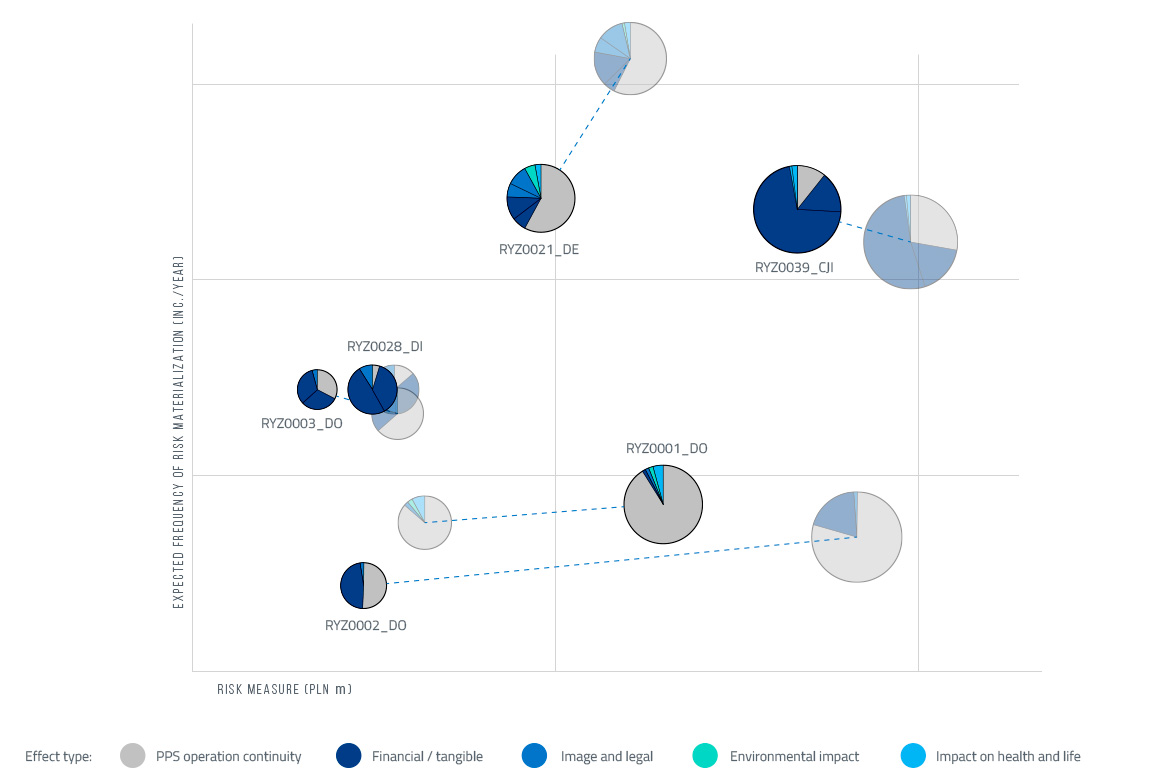Risk management
Tools used for risk management
PSE has the Risk Management Policy in place, under which risk management covers all areas of the company's operations, in particular ensuring continuity of electricity supply, provision of transmission services and implementation of investment processes.
The company's strategy for the years 2017-2019 indicates reliability, credibility and responsibility as the highest values on which our organisation’s vision and mission are based. Ensuring the compliance of PSE's activities with the above values requires, among others, predicting threats and opportunities resulting from events independent of the company, as well as the consequences of consciously made decisions. Risk management policy is a directional document aimed at coordinating, systematising and unifying the risk management activities undertaken by PSE.
The activities include:
- identification, description and quantitative and qualitative assessment of uncertain events that may have a significant impact on the company's ability to achieve strategic, financial and operational goals and on its reputation,
- selection of methods and tools that reduce the probability of occurrence and/or minimise negative risk effects or increase the probability and/or maximise positive risk effects,
- maintaining identified risks within acceptable limits, by taking actions which are economically acceptable and take into account the justified level of security of the company's operations.
Risk management is an integral part of organisational and management processes at the company, and information obtained as a result of risk assessment forms the basis for effective decision-making, in particular regarding the allocation of financial resources.
Risk management at PSE consists in systematic application of planned and coordinated activities, procedures and practices in order to identify and assess events with potentially significant impact on the company's operations, followed by elimination or reduction of negative impacts – or reinforcement of positive impact – through the implementation of appropriately selected control mechanisms.
The basic risk management activities at PSE are as follows:
- development and improvement of the risk management methodology,
- identification, description, qualitative and quantitative evaluation of risks, and development of risk management plans,
- carrying our risk reviews,
- implementation of risk management plans and operational risk management.


